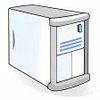Extend the hibernation and suspension options of your PC
Extend the hibernation and suspension options of your PC
Vote: (1 votes)
Program license: Free
Developer: Noel Danjou
Version: 1.06
Works under: Windows
Vote:
Program license
(1 votes)
Free
Developer
Version
Noel Danjou
1.06
Works under:
Windows
Pros
- Advanced control over hibernation and suspension settings
- Wake computer at specific times or after set intervals
- Automatic application launching upon system wake
- Intelligent suspension based on network activity
- User-friendly interface
- Light on system resources
Cons
- Potentially conflicts with pre-installed energy management schemes
- May require troubleshooting for optimal use with existing power settings
WakeUp is a software utility designed to provide advanced control over your computer's power management options. It especially benefits users looking to automate the hibernation and suspension of their PCs in the absence of a preinstalled energy management scheme.
Enhanced Power Management Control
WakeUp boasts a suite of five main functions that expand upon your computer's native capabilities. Users can activate or deactivate hibernation as per their needs, ensuring that they can conserve energy when their computer is not in use. For those who require their computer to be up and running at specific times, WakeUp facilitates this through its feature to wake the computer after a set period or at a predetermined time.
Additionally, for those who rely on certain applications running right as the computer comes out of hibernation, WakeUp provides the capability to run an application automatically upon the system's revival. This proves particularly useful for tasks that need to resume immediately after the computer wakes up.
Another key feature is the ability to suspend the computer at a specified time. This is advantageous for users who wish to ensure their systems are not running unnecessarily throughout the night or during times when the computer is not needed. WakeUp also integrates intelligent decision-making by preventing the computer from going into suspension if there is active network activity, thereby avoiding interruptions during important downloads or remote work sessions.
User Accessibility
WakeUp shines in its accessibility. The software's interface is straightforward, making it user-friendly and easy to navigate. This ease of use extends to minimal resource consumption as WakeUp runs lightly in the background without hogging memory or processing power, ensuring that it won't slow down your computer's performance.
However, compatibility is a concern that users must take into account. If your laptop or PC already has an energy management scheme pre-installed, WakeUp might conflict with those settings. Such conflicts could result in unexpected hibernation behaviors or incorrect timing, which could be frustrating for the user.
Preservation of Hardware
For users who frequently step away from their PCs and are concerned about the longevity of their hardware, WakeUp offers a valuable tool for preserving the system's health. By managing when and how the computer enters hibernation or suspension, users can prevent their hard drives from overworking and potentially suffering from wear and tear.
In Summary
WakeUp caters to those who require more nuanced control over their system's power management beyond what is offered by default. Its application timing features, suspension scheduling, and intelligent wake-up capabilities make it an attractive choice for energy-conscious and performance-minded individuals alike. Users should, however, be wary of potential conflicts with existing power schemes on their systems to avoid any unintended behaviors.
Pros
- Advanced control over hibernation and suspension settings
- Wake computer at specific times or after set intervals
- Automatic application launching upon system wake
- Intelligent suspension based on network activity
- User-friendly interface
- Light on system resources
Cons
- Potentially conflicts with pre-installed energy management schemes
- May require troubleshooting for optimal use with existing power settings



